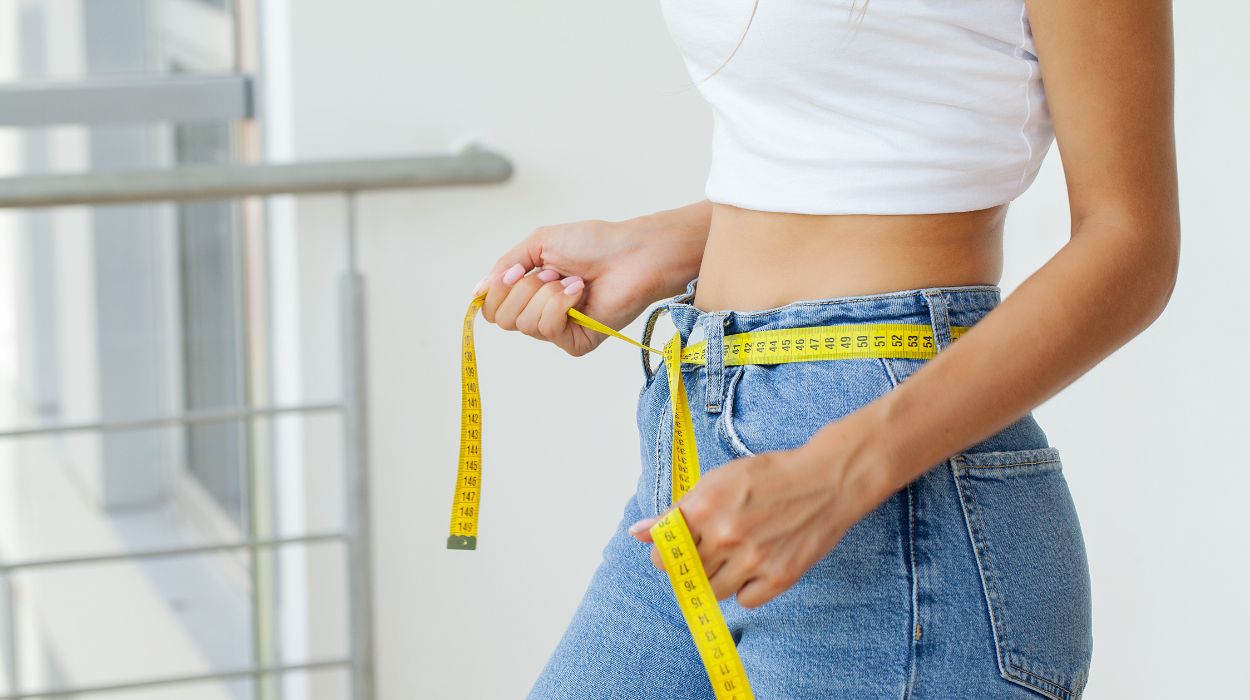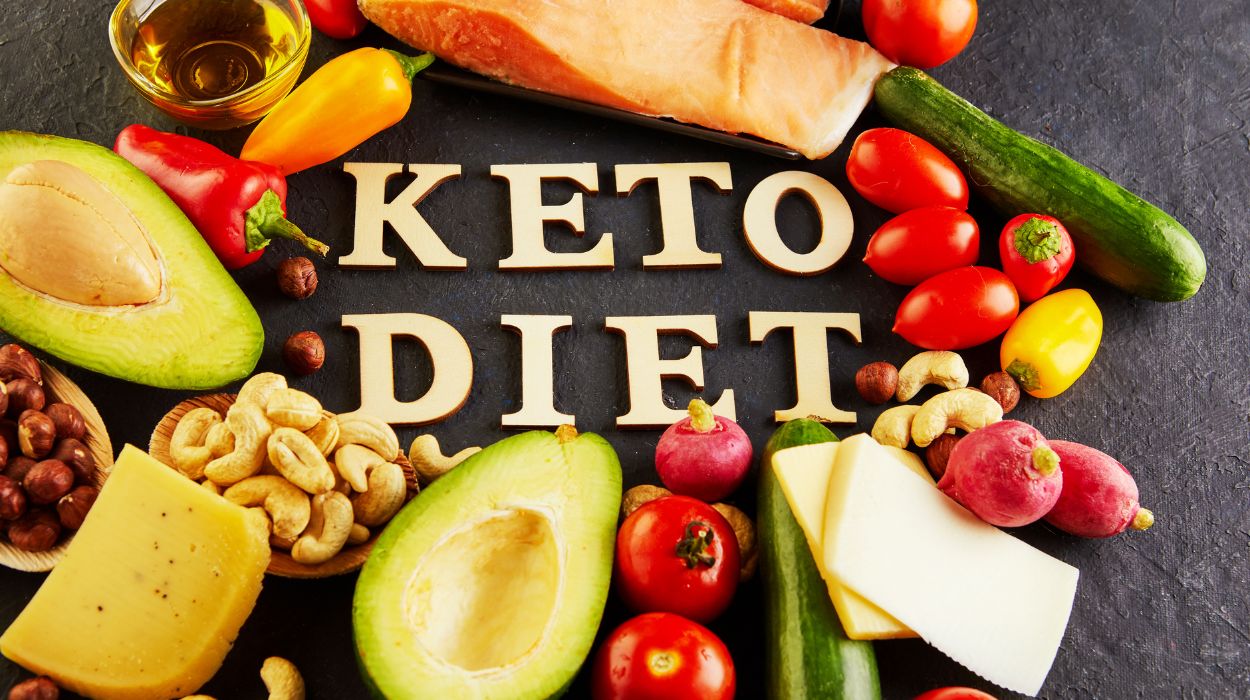 Expert's opinion
Expert's opinion
Expert's opinion
The article is a subjective view on this topic written by writers specializing in medical writing.
It may reflect on a personal journey surrounding struggles with an illness or medical condition, involve product comparisons, diet considerations, or other health-related opinions.
Although the view is entirely that of the writer, it is based on academic experiences and scientific research they have conducted; it is fact-checked by a team of degreed medical experts, and validated by sources attached to the article.
The numbers in parenthesis (1,2,3) will take you to clickable links to related scientific papers.
Atkins Diet Plan Helps You Lose 15 Pounds In 2 Weeks (2024 Updated)

Developed by Dr. Robert Atkins in the 1970s[1], the Atkins diet uses a low-carbohydrate meal plan to promote weight loss.
Several variations of the Atkins diet exist and your choice depends on how far from your weight loss goals you are and your health goals.
How much weight you can lose on Atkins diet depends on several factors.
The Atkins Diet Can Lose 15 Pounds In 2 Weeks
You could lose up to 15 pounds from the first two weeks in the first stage of the Atkins diet. However, such dramatic weight loss is not possible for everyone and it could range between 6-15 pounds.
When you are on a weight loss diet like the Atkins diet, how much weight you lose depends on your degree of commitment and your body composition.
Results vary for different body types and the more committed you are, the sooner you can expect results.
Losing 15 pounds in two weeks might be possible but it is not the norm for many people on the Atkins diet. If you are expecting such dramatic weight loss soon, consider lowering your weight loss expectations.
The first phase of the Atkins diet is where you would probably experience the most dramatic weight loss but it could take at least two weeks to show. These first few weeks place the greatest restriction on your carb intake.
In the first two weeks of the first phase of your Atkins diet, you could lose anywhere between 6 and 15 pounds. You could lose up to 3 pounds each week in the following weeks as your carbs restrictions loosen.
How The Atkins Diet Works

Many followers of the Atkins diet observe significant changes in their weight. So, how does it do it?
The answer is ketosis.
The Atkins diet does not bother with calorie counting but limits your intake of carbohydrates drastically. Depending on the type of Atkins diet you are on, it could restrict you to 20 or 40 grams of carbs daily.
This figure does not include fiber content as you can include sufficient fiber in your diet to relieve problems with your digestive tract.
Carbs provide a direct energy source for your body when it is converted to glucose. Your body stores the excess glucose as glycogen which provides energy during a limited food supply.
With carbs limited in your diet, you will get your daily nutrition from mostly proteins and healthy fats.
When you make the switch, your body initially begins to burn your body’s glycogen stores for energy. Depleted glycogen stores and water loss[2] are responsible for the drastic weight loss you observe in your first few weeks on the Atkins diet.
Under the Atkins nutritional approach, your body switches to your fat stores as its primary energy source and you will start seeing yourself losing weight.
Oxidation of fat for energy produces ketones which your body uses as fuel to drive metabolism. This state is called ketosis.
Ketosis Is Safe?

Ketosis is safe for most people but you should discuss it with your healthcare provider before you begin the Atkins diet especially if you have health problems[3] affecting your liver, thyroid, pancreas, and gallbladder.
Some people might also experience some unpleasant side effects from being in ketosis such as headaches, constipation, and the notable ketotic breath.
This ketotic state helps your body burn fat stores to bring you the weight loss you observe.
You could also supplement your dieting efforts with exercises such as dancing to lose weight.
On the Atkins website, you can find hundreds of acceptable foods[4] for your low-carb diet.
Foundation vegetables should provide most of your net carbs. Include more protein sources such as fish, fowl, meat, and eggs in your meal. High-fat foods such as mayonnaise, butter, olive oil, and vegetable oils are acceptable.
Phases Of The Atkins Diet
Four distinct stages form the Atkins diet plan. Each phase restricts your carb intake to a specific degree. You can progress from one phase to the next depending on your weight loss results and goals.
Phase 1: Induction
The induction phase provides the most drastic weight loss results. It is the first phase of the Atkins diet and places the greatest restriction on your net carb intake.
In the induction phase, your diet should contain about 20 grams of net carbs. That is excluding fiber.
Foods such as white bread, fruit, grain, alcohol, and dairy products are off the menu at this stage.
However just because your diet consists of mostly protein does not mean that you should eat as much protein as possible. Eating fewer calories might not be necessary but exercising restraint and eating in moderation is crucial if you want to keep the weight off.
If you eat excess proteins and fat, you could still observe weight gain.
To ensure you are following through with the diet, consider counting carbs. The carb content of foods can vary with cooking and mode of preparation, so carb counting is essential if you do not want to eat too many carbs and stay true to the diet.
Water weight is usually the first thing to go during the induction phase. Losing glycogen stores as your body switches to ketosis also contributes to weight loss. You can expect to lose 6-15 pounds within the first two weeks in the Induction stage.
Phase 2: Ongoing Weight Loss
The ongoing weight-loss stage lets you lose weight at a steady pace. Your diet will change slightly as you begin to add 5g extra to your carb intake each week. You can also include nuts and seeds[5]
For instance, in your first week in the ongoing weight-loss stage, you could consume 25 grams of net carbs, and the following week, you can go up to 30g.
You can keep increasing your daily intake of net carbs till you find a balanced point where you can still shed pounds while feeling energetic and in control.
Paying attention to how your body responds to each new carb food you reintroduce into your diet will help you devise a low-carb eating plan that is enjoyable yet does not interfere with your goal weight.
In the ongoing weight loss phase, you could expect to lose 1-3 pounds weekly.
Depending on how far off from your goal weight you are, you could skip phase 1 and jump right into phase 2. If you are only 15 pounds away[6] from your desired weight, starting at phase 2 might be right for you.
You could still begin the Atkins diet at phase 2 even if you have more than 15 pounds to lose, however, you will have slower weight loss results.
Phase 3: Pre-maintenance
You can transition to the pre-maintenance phase when you are 10 pounds away from your goal weight.
In this phase, you can begin introducing more carbs into your diet. Fruits, whole grains, and starchy vegetables that were once forbidden can now appear on your plate.
Your net carbs per day intake can increase up to 50-80g.
This phase brings you to your desired weight slowly and can last up to a month after you have achieved your weight loss goals.
Phase 4: Lifetime Maintenance
When you have achieved your goal weight, you can move on to the final stage of your journey.
You can enjoy a low carbs diet of 80-100 grams of net carbs daily to help maintain your results.
Classes Of Atkins Diet
Three variations of the Atkins diet are on the Atkins website. They are[7]
- Atkins 20. The Atkins 20 diet is the original Atkins diet and it begins with a reduction of your net carbs to 20g daily. It provides the most drastic weight loss results. However, it might be tedious for some people.
- Atkins 40. If you want more flexibility in your ketogenic diet, the Atkins 40 diet might be better for you. It offers a wider variety of meals with fewer carbs to choose from. If you want to lose less than 40 pounds, Atkins 40 might be for you.
- Atkins 100. A low carbs lifestyle has many benefits and the Atkins 100 diet might be for you. It is also great for pregnant women, breastfeeding mothers, and people who simply want to maintain their weight.
Still confused about what Atkins diet to choose?
The Atkins website could help you choose.
Final Thoughts
You could lose up to 15 pounds during your first phase of the Atkins diet. Weight loss in this first phase could be between 6-15 pounds within the first two weeks.
However, as you progress to the later phases of the Atkins diet, your weight loss rate goes down. In the coming weeks, you could lose 1-3 pounds weekly.
The Atkins diet works by sending your body into ketosis. Therefore, your stored fat provides the energy for your activities. The three phases of the Atkins diet are:
- Phase 1: Induction
- Phase 2: Ongoing Weight Loss
- Phase 3: Pre-maintenance
- Phase 4: Lifetime Maintenance
+ 7 sources
Health Canal avoids using tertiary references. We have strict sourcing guidelines and rely on peer-reviewed studies, academic researches from medical associations and institutions. To ensure the accuracy of articles in Health Canal, you can read more about the editorial process here
- Atkins. (2018). Atkins Diet History and Background | Atkins. [online] Available at: https://www.atkins.com/our-story/atkins-diet-history
- LIVESTRONG.COM. (2011). How Fast Can You Lose Weight on Atkins? | Livestrong.com. [online] Available at: https://www.livestrong.com/article/407147-how-fast-can-you-lose-weight-on-atkins/
- Helms, N. (2019). Is the Keto Diet Safe? What are the Risks? [online] Uchicagomedicine.org. Available at: https://www.uchicagomedicine.org/forefront/health-and-wellness-articles/ketogenic-diet-what-are-the-risks
- Atkins. (2020). 200+ Low Carb Foods for Atkins 20, Phase 1 | Atkins. [online] Available at: https://www.atkins.com/how-it-works/atkins-20/phase-1/low-carb-foods#acceptable
- Atkins. (2020). Transitioning to Atkins 20® Phase 2 After Induction | Atkins. [online] Available at: https://www.atkins.com/how-it-works/atkins-20/phase-1/transition-to-phase-2#acceptable
- Atkins. (2020). Low Carb Diet Facts for Weight Loss During Phase 1 | Atkins. [online] Available at: https://www.atkins.com/how-it-works/atkins-20/phase-1/faq
- Atkins. (2020). How Does a Low Carb Diet Work | Atkins. [online] Available at: https://www.atkins.com/how-it-works



